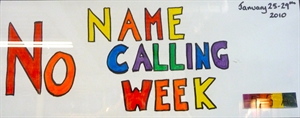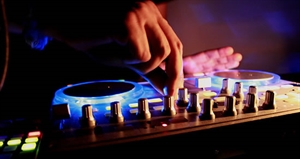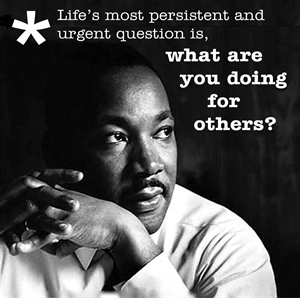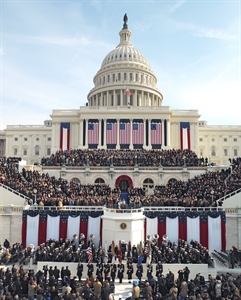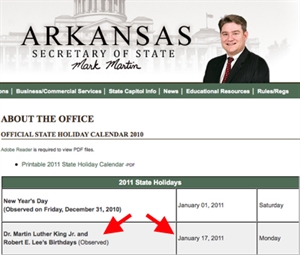National Disc Jockey Day 2025 is on Monday, January 20, 2025: whats it like in cleveland ?
Monday, January 20, 2025 is National Disc Jockey Day 2025.
As an Amazon Associate I earn from qualifying purchases.

Five miles (8 km) east of downtown Cleveland is University Circle, a 500-acre (2 km²) concentration of cultural, educational, and medical institutions, including Case Western Reserve University, Severance Hall, University Hospitals, and the Cleveland Museum of Art. Cleveland is also home to the I. M. Pei-designed Rock and Roll Hall of Fame, located on the Lake Erie waterfront at North Coast Harbor downtown. Neighboring attractions include Cleveland Browns Stadium, the Great Lakes Science Center, the Steamship Mather Museum, and the USS Cod, a World War II submarine.
Cleveland is home to Playhouse Square Center, the second largest performing arts center in the United States behind New York's Lincoln Center.[17] Playhouse Square includes the State, Palace, Allen, Hanna, and Ohio theaters within what is known as the Theater District of Downtown Cleveland. Playhouse Square's resident performing arts companies include the Cleveland Opera, Ohio Ballet, and the Great Lakes Theater Festival. The center also hosts various Broadway musicals, special concerts, speaking engagements, and other events throughout the year. One Playhouse Square, now the headquarters for Cleveland's public broadcasters, was originally used as the broadcast studios of WJW Radio, where disc jockey Alan Freed purportedly first coined the term "rock and roll".
Additionally, Cleveland is home to the Cleveland Orchestra, widely considered one of the finest orchestras in the world, and often referred to as the finest in the United States.[18] It is one of the "Big Five" major orchestras in the United States. The Orchestra plays in Severance Hall during the winter and at Blossom Music Center during the summer.
The Free Stamp sculpture by Claes Oldenburg and Coosje van Bruggen in downtown's Willard Park.
Enlarge
The Free Stamp sculpture by Claes Oldenburg and Coosje van Bruggen in downtown's Willard Park.
Cleveland is home to many festivals throughout the year. Cultural festivals such as the annual Feast of the Assumption in the Little Italy neighborhood, the Greek Orthodox Festival in the Tremont neighborhood, and the Harvest Festival in the Slavic Village neighborhood are popular events. Vendors at the West Side Market in Ohio City offer many different ethnic foods for sale. Cleveland hosts an annual parade on Saint Patrick's Day that brings thousands to the streets of downtown.
In addition to the cultural festivals, Cleveland also hosts the CMJ Rock Hall Music Fest, which features national and local acts, including both established artists and up-and-coming acts. The city recently incorporated an annual art and technology festival, known as Ingenuity, which features a combination of art and technology in various installations and performances throughout lower Euclid Avenue. The Cleveland International Film Festival has been held annually since 1977, and its 11-day run draws about 43,000 people. Cleveland also hosts an annual holiday display lighting and celebration, dubbed Winterfest, which is held downtown at the city's historic hub, Public Square.
Cleveland also served as the location for several noteworthy movies, including The Fortune Cookie (1967) with Walter Matthau and Jack Lemmon, the Academy Award-winning The Deer Hunter (1978), and the holiday favorite A Christmas Story (1983).[19] Scenes for the upcoming movie Spider-Man 3 were filmed in Cleveland in April 2006.[20] Cleveland is the lifelong home of cartoonist Harvey Pekar and setting for most of his autobiographical comic books. Additionally, the city was also the setting for the popular sitcom, The Drew Carey Show which starred Cleveland-native Drew Carey.
Cleveland is also the birthplace of the legendary comic book character Superman, created by Joe Shuster and Jerry Siegel, in 1932. Both attended Glenville High School, and their early collaborations resulted in the creation of "The Man of Steel".
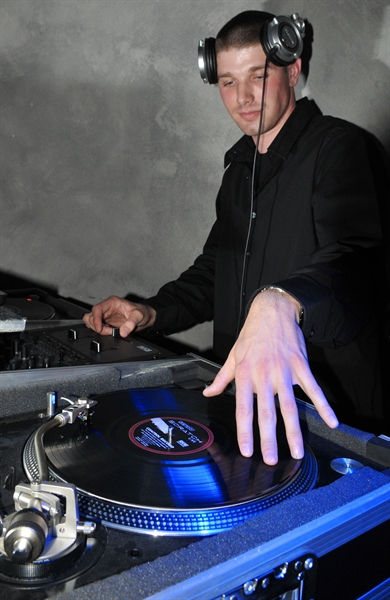
Who can explain to me in layman terms what the song "bye bye miss american pie," please?
"American Pie" is an eight-and-a-half minute long classic rock song by singer-songwriter Don McLean, about "the day the music died".
Recorded in 1971 and released that year on the album of the same name, it was a number-one U.S. hit in 1972. It offers an allusive history of rock and roll, inspired by the deaths of Buddy Holly, Ritchie Valens and J. P. Richardson, Jr. (The Big Bopper) in a plane crash in 1959. The importance of "American Pie" to America's musical and cultural heritage was recognized by the Songs of the Century education project, created by the Recording Industry of America Association, the National Endowment for the Arts, Scholastic Inc., and AOL@School which listed the song performed by Don McLean as the number five song of the twentieth century.
The song's lyrics remain the subject of much debate. Although McLean dedicated the American Pie album to Buddy Holly, none of the singers in the plane crash are identified by name in the song itself. Later performers are also alluded to with easily decoded identifications, leading to much discussion, encouraged by McLean's canny lifelong refusal to explain the lyrics. Asked what "American Pie" meant, McLean once replied, "It means I never have to work again". Later, he more seriously stated, "You will find many 'interpretations' of my lyrics but none of them by me [...] Sorry to leave you all on your own like this but long ago I realized that songwriters should make their statements and move on, maintaining a dignified silence."
Interpretations
During its initial popularity, guessing about the meaning of the song's lyrics was a popular pastime. Many radio stations and disc jockeys published unofficial interpretations. Over the years, assisted by the collective power of the Internet and McLean himself, something approaching a "standard interpretation" of the song has emerged. How much of it was actually in McLean's mind, consciously or unconsciously, when he wrote the lyrics, is often debated.
In his "Starry, Starry Night" video recorded in 2000, McLean said:
I'm very proud of the song. It is biographical in nature and I don't think anyone has ever picked up on that. The song starts off with my memories of the death of Buddy Holly. But it moves on to describe America as I was seeing it and how I was fantasizing it might become, so it's part reality and part fantasy but I'm always in the song as a witness or as even the subject sometimes in some of the verses. You know how when you dream something you can see something change into something else and it's illogical when you examine it in the morning but when you're dreaming it it seems perfectly logical. So it's perfectly okay for me to talk about being in the gym and seeing this girl dancing with someone else and suddenly have this become this other thing that this verse becomes and moving on just like that. That's why I've never analyzed the lyrics to the song. They're beyond analysis. They're poetry. [1]
McLean's website provides a clear statement of the songwriter's purpose [2]:
["American Pie" is] autobiographical and presents an abstract story of Don McLean's life from the mid 1950s until when he wrote the song in the late 1960s. It is almost entirely symbolised by the evolution of popular music over these years and represents a change from the lightness of the 1950s to the darkness of the late 1960s.
The primary interpretation of "American Pie" in this article is based on McLean's stated intent, his other views, particularly regarding religion, and his biography. These are used to filter alternative interpretations from the three sources in the Reference section and other well-known events in music history. Each Reference section source is in itself a compilation of the viewpoints of many more people as well as other references. Even so, "American Pie" remains somewhat of an enigma given McLean's sparse explanations. Though it is clear he intended multiple meanings for certain parts of his song, it is not clear where he intended to have them. When McLean's autobiographical theme is relaxed or ignored, the numerous allusions have been combined to create some novel impressionistic effects that have lead to interpretations he may not have intended.
Autobiographical theme
The autobiographical theme of "American Pie" provides the chronological framework for the song's verses. The first verse describes McLean's memories of the rock and roll dance music he loved as a young child and his reaction, at age thirteen, to the deaths of Holly, Valens, and Richardson. "American Pie" may represent the youthful, popular American culture of the mid- and late-1950s that involved the styles in music, dance, dress, movies, radio, television, and romance that McLean loved as a child and young teenager. The chorus marks the passing of that culture and its values with the accidental deaths of Holly, Valens, and Richardson.
The second verse describes McLean's perception of American culture during his innocent boyhood and the beginning of the loss of innocence thereafter. McLean personified that perception as Miss American Pie, referring to her as "you" in the lyrics. By imagining that he asks her whether she wrote "the book of love" and whether she has faith in God if the Bible tells her so, McLean might have expressed his belief about how important the moral and spiritual values of the Christian faith were for America at the time. In addition, McLean may have imagined Miss American Pie dancing at a sock hop with Buddy Holly, representing America's love of 1950s rock and roll. Added to the gloom associated with the deaths of Holly, Valens, and Richardson, McLean alluded to "Lonely Teenager", a song by Dion and The Belmonts released in 1960. (Dion performed with the other three musicians the night before they perished.) McLean has mentioned that 1959 to 1963 marked his acquaintance with "the darker realities of adulthood": his father died in 1961; and in 1963, he dropped out of Villanova University to become a professional musician, and suffered as President Kennedy was assassinated. Finally, the verse includes an allusion to being stood up at a prom by referring to the song "A White Sport Coat (And A Pink Carnation)" (1957) by Marty Robbins), which likely represents McLean's final separation with Miss American Pie.
The third verse focuses on the rise of Bob Dylan, and corresponds to McLean's years as a young adult, the songwriter being inspired by The Weavers to become a professional folk singer at the time Dylan emerged as a powerful and popular musical force. From 1963 to 1969, McLean performed and toured with the likes of Pete Seeger, Herbie Mann, Brownie McGee, Sonny Terry, Melanie, Steppenwolf, Arlo Guthrie, Janis Ian, Josh White, and Ten Wheel Drive. McLean's intimate knowledge of Bob Dylan's songs are reflected in multiple verses. As an observer and participant in the 1960s American music scene, McLean traced the rise and domination of American music by The Beatles (1959-1969), starting in the third verse; and highlighted the tribulations of The Byrds (1966-1967), in the fourth.
By 1968, McLean, at age 22, was invited to become "Hudson River Troubadour" by the New York State Council for the Arts. In the song's fifth verse, McLean is at odds with the cultural and musical trends represented by Woodstock, which took place in his native New York in 1969, and conveys his disgust with The Rolling Stones (1968-1969). While McLean recorded his first album, "Tapestry", in 1969, a student riot took place just outside the Berkeley, California studio's door. By the last verse, McLean is saddened by the death of Janis Joplin (1970), and is dejected by the dissolution of music as an uplifting, spiritual, and moral force in the face of overwhelming violence at home and broad.
Overall, McLean's musical "evolution" starts with Bob Dylan's celebration of expanding liberty, freedom, and individuality in "a voice that came from you and me"; moved through the the drug-influenced culture of the mid- and late 1960s of "Helter Skelter" and "Sgt. Pepper's Lonely Hearts Club Band" by The Beatles; and ended with what seems to be the masochistic violence of "Jumpin' Jack Flash" by The Rolling Stones and the real violent mayhem at the Altamont (California) Speedway concert in December 1969.
Cultural references
The day the music died
The day the music died is the name McLean gave to February 3, 1959, the day an airplane carrying musicians Buddy Holly, Ritchie Valens and The Big Bopper crashed, killing all three. But, as he explained on his web site [3], the date has a profound meaning to McLean because it marked a major change in his life:
"In Don's life the transition from light (the innocence of childhood) to the darker realities of adulthood probably started with the death of Buddy Holly and culminated with the assassination of President Kennedy in 1963 and the start of a more difficult time for America."
From the standpoint of about 1970, the twenty-five year old songwriter recalled the effect of six transitions on the day the music died, noted at the end of each verse of "American Pie".
In the first verse, McLean tries to remember how he felt when the Holly, Valens, and The Big Bopper died when he was a thirteen year old boy: But February made me shiver with every paper I'd deliver; and I can't remember if I cried when I read about his widowed bride (referring to Holly's pregnant wife Maria Elena Holly). But at the end, all he can say is, But something touched me deep inside the day the music died.
At the end of the second verse that describes McLean's perceptions of middle class America during the mid- and late-1950s, McLean believes that events after the day the music died would portend to bad times ahead: But I knew I was out of luck the day the music died.
At the end of the third verse that focuses on the rise of Bob Dylan, McLean speaks for a generation of songwriters and musicians that misses Holly, Valens, and Richardson: And we sang dirges in the dark the day the music died.
At the end of the fourth verse where McLean witnessed the effects of drug use on rock music, he asks if there was some higher meaning related to February 3, 1959: Do you recall what was revealed the day the music died?
After McLean saw a murder and beatings at the Altamont Speedway concert in December 1969, in the fifth verse, he writes that Satan was happy on the day the music died: I saw Satan laughing with delight the day the music died.
Finally, at the end of "American Pie", McLean sees Holly, Valens, and The Big Bopper off to heaven on February 3, 1959: They caught the last train for the coast the day the music died.
The Chevy and the levee
The chorus contains the line Drove my Chevy to the levee but the levee was dry that may have multiple meanings. The first is derived from lines in the 1956, General Motors jingle, "See the USA in Your Chevrolet", advertising that brand of vehicles:
1959 Chevrolet Impala (modified street rod)On a highway or road along the levee,
Performance is sweeter, nothing can beat her,"
Life is completer in a Chevy.
Since traveling is a common metaphor for making one's way through life, driving a Chevy meant making it through life in a patriotic, middle class style that the owner could be proud of. A drive on a "road along the levee" beside a river or other body of water represents a scenic, fulfilling sojourn, so, the missing water along the levee implies that the trip, life, became empty. In this interpretation, the loss associated with the departure, passing, or separation from Miss American Pie befits a mournful drinking song: And them good ol' boys were drinking whisky and rye singing / This'll be the day that I die / This'll be the day that I die. That separation is similar to the one feared by the guy with his gal in the Buddy Holly and The Crickets' song "That'll Be The Day".
It is possible that "the levee" also refers to the name of the bar in New Rochelle, New York (now known as the Beechmont Tavern) where McLean imagined he and and his friends mourned the death of Buddy Holly. The next chorus phrase meaning whiskey in rye rather than whiskey and rye may refer to the nearby town of Rye where McLean would often go with his friends after The Levee closed.
Miss American Pie
Some mistakenly believe that "Miss American Pie" is the name of the plane that crashed. This is an urban legend: the plane had no name, only a registration number [4].
Religion
The Trinity is mentioned in "American Pie". Painting: "The Trinity and All the Saints", by Jean Fouquet"American Pie" includes a number of Christian religious elements that includes an allusion to Jesus wearing his Crown of Thorns; and the mentioning of "angels born in hell", the Trinity, Satan, and titles of two songs with lyrics that allude to God. In addition, some people believe that "American Pie" alludes to the Apocalypse. The purpose of these elements probably is not to promote a Christian theme because McLean has explained that he is not Christian:
"I am not a devoted Christian. I do believe in God. I would say I'm some sort of a pantheist. I live in the forest and I think I'm living in church; that's my God. I do not understand why people have to believe in something. You're going to find out what the truth is one way or another sooner or later and it seems to me that the requirement that you need to believe in something in this life is like trying to choose door A or door B – are you going to choose the door to Heaven or the door to Hell and to me it doesn't seem intelligent. I do understand a lot of people get a lot of comfort from it but it's not for me." [5]
One purpose of the religious elements in "American Pie" might be to remind the listener that music can provide spiritual fulfillment. McLean seemed to have expressed his belief in this power of music in the two questions asked in the second verse: Now do you believe in rock and roll[?] and can music save your mortal soul[?]. It also seems that McLean believed the antithesis is true, that music can corrupt the soul since the fifth verse describes a murder while The Rolling Stones performed music with wicked themes at the Altamont Speedway concert in December 1969.
The book of love and the Bible tells you so
The second verse of "American Pie" opens with a Christian theme: Did you write the book of love. The phrase refers to the title of the 1958 song "The Book of Love" by The Monotones, that includes the lines:
Tell me, tell me, tell me
Oh, who wrote the Book Of Love
I've got to know the answer
Was it someone from above?
The second verse also asks ... and do you have faith in God above? / If the Bible tells you so. This line is a take on the title of the 1955 song "The Bible Tells Me So" by Don Cornell. The song includes the refrain:
Have faith, hope and charity
That's the way to live successfully
How do I know, the Bible tells me so
[edit]
The king and the thorny crown
The third verse includes the line Oh and while the king was looking down, the jester stole his thorny crown. The Romans had mockingly nicknamed Jesus "the king of the Jews" in the hours before his death, forcing Jesus to wear a crown of thorns. Statues and paintings of Jesus dying on the Cross normally show Him still wearing the crown, and looking down to His mother and John. However, there is no Biblical account of the crown being stolen. (See the Bob Dylan section on the thorny crown being a symbol for suffering.)
The Trinity
"American Pie" ends with the lines:
And the three men I admire most: The Father, Son, and the Holy Ghost,
They caught the last train for the coast the day the music died.
The three persons are an allusion to the Christian Trinity. The interpretation that is most consistent with the events portrayed in the song is that the three persons are The Big Bopper, Valens, and Holly. Specifically, The Father is The Big Bopper, who was the only father among the three musicians. Indeed, at the time of Richardson's death at age 28, he had been married to Adrian Joy Fryon for over six years, and the couple had a daughter, Deborah, and were expecting a son, Jay Perry. The Son is Valens, who died as a child at age seventeen. The Holy Ghost of rock and roll is Buddy Holly because of his pervasive influence on that music. Holly was an original inductee to the Rock and Roll Hall of Fame. Their travel on "the last train for the coast" is a metaphor for death, with the coast representing heaven as their final destination.
Numerous other trios have been suggested, the most popular being the three American leaders assassinated during the 1960s: President John F. Kennedy as the Father; his younger brother Robert F. Kennedy as the Son; and the Reverend Dr. Martin Luther King, Jr. as the Holy Ghost. If "the last train for the coast" was heading to the American West, then the trio may be the triad of symbolic characters who journey west in the 1957 Jack Kerouac novel On The Road: Neal Cassady (a.k.a. Dean Moriarty, the epic hero of the novel and in the story the instigator of the events, as the father), Kerouac himself (a.k.a. Sal Paradise, the narrator and in the story a character inspired by Moriarty, as the son), and the Ghost of the Susquehanna.
New Age Religions and The Death of God
The line in the last verse, They caught the last train for the coast the day the music died, derives the notion of the Christian Trinity's departure, withdraw or defeat, or abandonment. These may allude to the many New Age religions that took root in the west coast of the U.S. during the 1960s, what some believe is the Christian God's abandonment of the America, or the death of God itself (see God is dead).
An image of the Apocalypse by Albrecht Dürer: "Four horsemen of the Apocalypse"[edit]
Apocalypse and nuclear war
Some people believe that "American Pie" includes an allusion to a battle between Satan against the Christian Trinity in the fifth and sixth verses. The impression is enhanced by the fourth verse's conflict between "players", interpreted as everyday people who want to dance, being prevented from accessing a field already occupied by a "marching band" composed of sergeants, interpreted as a military force. The desolation in the song's last lines, And in the streets the children screamed, the lovers cried, and the poets dreamed, / But not a word was spoken, the church bells all were broken, and the Trinity's subsequent departure or retreat, is interpreted as the Trinity's defeat. Because the fourth verse mentions a fallout shelter and what might seem to be a bomb dropped from "Eight miles high", some people perceive that the desolation is the aftermath of a future nuclear war that a morally-weakened America, though still represented by the Trinity, loses to the Soviet Union, represented by Satan. For some others, the crises illustrate a prophecy from the Book of Revelation that may or may not be realized as a nuclear war.
Music
In addition to the cultural references exposed above, there are several other references to events or changes in the world of music throughout "American Pie".
The decline of dance music
In contrast to the rock and roll theme in the second verse, the fourth verse seems to mark the decline of dance music where the lyrics reads: ... while the sergeants played a marching tune / We all got up to dance, oh but we never got the chance / 'Cause the players tried to take the field, the marching band refused to yield. The conflict between the sergeants and players may allude to the rivalry between intelligent, art rock (specifically represented by The Beatles' Sgt. Pepper's Lonely Hearts Club Band) and fun, dance rock (such as that by The Beach Boys), in which the marching music wins, meaning McLean thought that the era of rock and roll dance music was over. Some people believe this passage contains a deeper reference to the Vietnam war (this theory is discussed later), The Beatles' last live performance (see The Beatles section), and competition between The Beatles and The Byrds (see The Byrds section). Overall, McLean may be using the imagery of a football game to address The Beatles' domination of the "field" or occupation of the center stage of popular American music as measured in the sheer volume of their record sales represented by the June 1967 release of Sgt. Pepper's Lonely Hearts Club Band and release of Magical Mystery Tour only five months later. Both became U.S. best selling albums for 19 weeks and 8 weeks, respectively. The line "Now the half-time air was sweet perfume while the sergeants played a marching tune," has sometimes been interpreted to refer to either marijuana smoke, or teargas.
Bob Dylan
The jester, the king, and the queen
The third and fourth verses contain references to Bob Dylan. The third verse includes the lines:
When the jester sang for the king and queen in a coat he borrowed from James Dean
And a voice that came from you and me
Oh and while the king was looking down, the jester stole his thorny crown
A strong case has been made that the jester is Bob Dylan. James Dean famously wore a red windbreaker in the movie Rebel Without a Cause, and Dylan was shown in a windbreaker on the cover of one of his albums, Freewheelin' Bob Dylan. Dylan also described himself as a clown chasing his muse in "Mr. Tambourine Man" (1965). The fact that the jester sang in a "voice that came from you and me" would refer to the populist origins of folk music. The jester is mentioned again in the fourth verse line ... with the jester on the sidelines in a cast. Assuming the jester is Dylan, this probably refers to his July 29, 1966, motorcycle crash that left him badly injured.
In music, "the king" is Elvis Presley for McLean and much of America. The thorny crown, a Christian symbol for suffering, can be taken to represent the price of fame and power — specifically, Presley's struggle to cope with celebrity. The jester stealing the king's crown probably refers to Dylan overtaking Presley in record sales by the mid-1960s and also suffering the side effects of celebrity. McLean's line, The courtroom was adjourned, no verdict was returned, may refer to America's continued regard for Presley as "The King" even though Dylan was in the limelight.
Also in music, "the queen" of rock and roll in the late 1950s was Connie Francis. As with Elvis Presley, Francis' music recording successes were used to launch a successful movie career.
The rollin' stone
Some believe the third verse's second line and moss grows, fat on a rollin' stone is a reference to The Rolling Stones (see below). However, given that Bob Dylan is the main subject of the third verse, the phrase is taken from the title of Dylan's 1965 hit about himself, "Like a Rolling Stone". The line is a play on words on the proverb that "a rolling stone gathers no moss", but McLean says the stone grew moss by 1970 — a criticism of Dylan's relative, post-1966 motorcycle crash inertness, and diminished daring, creative energy and intensity. From the vantage point of 1970, McLean notes Dylan's decline in the third line: But that's not how it used to be. The moss that grew fat around Dylan may represent all the musicians who prospered by performing Dylan's 1962-1965 songs like "Blowin' In The Wind", "Mr. Tambourine Man", "Don't Think Twice, It's All Right", "Like A Rolling Stone", and numerous others (see Bob Dylan), or the royalties Dylan earned from other performers' efforts.
The Beatles
Lennon and Marx
The third verse ends with the following lines:
And while Lennon read a book on Marx, the quartet practiced in the park
And we sang dirges in the dark the day the music died."
John Lennon in 1964.A historically consistent interpretation of the lyrics is that the quartet that practiced separately from the Marx-reading John Lennon on February 3, 1959, was a band of teenagers known as The Les Stewart Quartet that included George Harrison [6]. The Quartet practiced to open the Casbah Club in the summer of 1959 [7]. The Casbah Club was a Liverpool social club for teenagers, run by Mona Best, the mother of Pete Best. Harrison joined the Quartet because he was freed when his previous band, The Quarry Men that included founder, John Lennon, and Paul McCartney, broke-up in January 1959. (The Beatles are linked to Buddy Holly because, in 1958, The Quarry Men that included Lennon, McCartney, and Harrison, and two others, produced the pre-Beatles trio's first ever recording — a demo that included an arrangement of "That'll Be The Day". In addition, The Beatles name was also an imitation of The Crickets name [8].) However, The Les Stewart Quartet proved unstable, losing two members (Les Stewart and Ken Brown) who were replaced by Lennon and McCartney. The Quartet was recomposed as The Quarry Men, and its first performance was at the opening of the Casbah Club on August 29, 1959. Groucho and Me, Groucho Marx's humorous autobiography, was published in 1959. McLean may have imagined the eighteen year-old John Lennon reading the book after the break-up of his band in January. The "park" is likely the Casbah Club, as it was located at 8 Heyman's Green, West Derby, Liverpool [9].
Karl MarxAs alternatives, the quartet is often believed to be The Beatles, though, this is inconsistent with the lyric because The Beatles quartet included John Lennon. The Beatles, however, did perform as a quintet consisting of Lennon, McCartney, Harrison, Pete Best, and Chas Newby (substituting for Stuart Sutcliffe) at the Casbah Club in December 1960, after the group (that included Sutcliffe) performed for several months in Hamburg, Germany [10]. In this case, McLean might be alluding to Germany, since Marx could mean Karl Marx, a German, and meaning that Lennon read about communism, creating a pun for the political theory Marxist-Leninism. In 1970, Lennon released the song "Working Class Hero", which included allusions to communist themes, such as the line[we're] doped on religion, sex and TV, a reference to Karl Marx' dictum that "religion is the opiate of the masses".
Practicing "in the park" could also have several possible alternative meanings. "Park" as a reference to a stadium could refer to any number Beatles' performances, including the August 15, 1965, show in Shea Stadium (originally supposed to be called Flushing Meadow Park) [11], or The Beatles' last public concert at Candlestick Park in San Francisco, California on August 29, 1966; or to England or Europe where The Beatles "practiced" before first coming to America in 1964.
Helter skelter
Charles MansonThe fourth verse begins with Helter skelter in a summer swelter. "Helter Skelter" is a Beatles song that was released in two versions on two albums. The "summer swelter" may allude to The Beatles' efforts during the summer of 1968 to record different versions of the song: one session to record a single over 27 minutes long and an edited version appearing on the 1996 The Beatles Anthology, Volume III; and another two day long session that included eighteen takes of approximately five minutes each to create the 1968 White Album. The strain of the second session earned Ringo Starr blistered and bleeding fingers.
The "summer swelter" may also or alternatively refer to the August 1969 Tate/LaBianca murders. The mastermind behind the killings, Charles Manson, claimed "Helter Skelter" inspired the bloodbaths he convinced his followers to commit.
The sergeants
Some people believe the lines in the fourth verse ... while the sergeants played a marching tune / We all got up to dance, oh but we never got the chance refers to The Beatles' (the sergeants) last live concert that occurred on the last leg of their 1966 North American tour at Candlestick Park in San Francisco on August 29, because their performance lasted for only 35 minutes. The interpretation is inconsistent with The Beatles' discography because the concert pre-dates the 1967 release of Sgt. Pepper's Lonely Hearts Band and the album's recording sessions which started on November 24, 1966 [12].
Another interpretation of the following verse: "While sergeants played a marching tune, We all got up to dance, Oh, but we never got the chance, 'Cause the players tried to take the field, The marching band refused to yield" is that the music of the sixties was dominated by the Beatles, and for this reason other artists did not get a chance to shine.
The Byrds
The fourth verse contains the lines ... the birds flew off with a fallout shelter / Eight miles high and fallin' fast, it landed foul on the grass. "The birds" are likely the American rock group The Byrds. The fact they "flew off with a fallout shelter" refers to their huge initial success, which they owed to their arrangement of Bob Dylan's "Mr. Tambourine Man". An American fallout shelter sign appears on Dylan's 1965 Bringing It All Back Home album cover containing the song. However, The Byrds popularity suffered ("falling fast") when their reputation for drug use rubbed off on their 1966 release of "Eight Miles High". Many radio stations banned the recording when some thought it was about drug consumption ("it landed foul on the grass").
With the fourth verse mentioning the songs "Helter Skelter" (1968) and "Eight Miles High" (1966), and 1966 as the "halftime" of the 1960s decade (1961-1970), and alluding to The Beatles' "Sgt. Pepper's Lonely Hearts Club Band" (1967), McLean addressed the period, 1966 to early 1969, since the fifth verse alludes to two music concerts that took place in the second half of 1969. The lines, The players tried for a forward pass with the jester, on the sidelines in a cast, might refer to The Byrds' less than successful bids to outdo The Beatles without Bob Dylan songs after 1966.
The Woodstock generation
McLean described his own generation as being lost to drug use in the opening of the fifth verse:
Oh, and there we were all in one place, a generation lost in space
With no time left to start again.
The generation is represented by the 400,000 to 500,000 mostly young people "all in one place", the Woodstock Music and Art Fair held at White Lake, New York, August 15-19, 1969. In addition, Woodstock hosted a gamut of some of the generation's greatest music artists.
"Lost in space" may have been an intentional corruption of the title of the 1967 musical "Hair" song "Walking In Space". The song vividly describes a clandestine, hallucinogenic drug experience [13]. Alternatively, the term might refer to the state of being "spaced out", i.e., dazed from the intoxicating effects of drugs. Finally, it could alternatively or also refer to the popular, campy American television science fiction series of the time, Lost in Space, about a group of space travelers, that includes a family, who lose their way and are unable find their way back home.
McLean may have felt his generation permanently lost its innocence to drug use since it had "no time left to start again". The loss is represented in the verse's next lines that open a nursery rhyme to which McLean adds a perverted twist:
So, come on Jack be nimble, Jack be quick, Jack Flash sat on a candlestick 'cause
Fire is the devil's only friend
Jack Flash, is the crazed character in the 1968 The Rolling Stones song "Jumpin' Jack Flash" [14]. McLean's adding "sat on a candlestick" to Jack Flash's list of pleasures may represent masochism.
The Rolling Stones
Greed
The Rolling Stones are mentioned in the "American Pie", where they might be first identified in the third verse's first line: ... and moss grows, fat on a rollin' stone. This is a play on words on the traditional proverb "a rolling stone gathers no moss", and might be a criticism of the band's alleged greed, or simply a reference to the death of the band's founding member Brian Jones in 1969. Alternative interpretations counter that the rolling stone is in fact Dylan, growing fat with moss during his hiatus from touring and public appearance in the late 60's.
The Altamont Speedway/"Gimme Shelter" concert
The fifth verse is believed to describe a December 9, 1969, free concert, organized by The Rolling Stones, at the Altamont Speedway near Livermore, California, in which The Rolling Stones, The Grateful Dead and others performed. The Stones and The Dead are identified by references to their songs, "Jumpin' Jack Flash" (1968) and "Friend of the Devil" (1970), respectively: So come on Jack be nimble, Jack be quick, Jack Flash sat on a candlestick 'cause / Fire is the devil's only friend, though the "devil" may rather allude to The Stones' 1968 song, "Sympathy for the Devil", a more historically consistent interpretation. The concert was captured on film in the 1970 documentary named after the The Stones' 1969 song "Gimme Shelter". The "devil" is Mick Jagger, who performed "Sympathy for the Devil" that night dressed in black with a red cape before 300,000 people. "Angels born in hell" refers to members of the Hells Angels gang, who were hired to provide security. That night, gang members were beating concert goers and Marty Balin of the band Jefferson Airplane. McLean, who did not attend the concert, wrote that he was enraged:
Oh, and as I watched him on the stage my hands were clenched in fists of rage
No angel born in hell
Could break that Satan's spell
McLean imagined the music agitating the Hells Angels into a killing frenzy that resulted in their stabbing to death the armed concert goer Meredith Hunter: And as the flames climbed high into the night to light the sacrificial rite. The murder was captured on film. Hundreds were injured in the violence.
Janis Joplin
The final verse opens with I met a girl who sang the blues, which probably alludes to Janis Joplin, who many consider to be the greatest white blues artists of all time. Her death through an accidental heroin overdose in October 1970, is alluded to in the third line: But she just smiled and turned away. Another possibility is jazz singer Billie Holiday who died in July 1959.
The Vietnam War
The draft
Some people interpret part of the fourth verse as a reference to the Vietnam War. The section reads: ... while the sergeants played a marching tune / We all got up to dance, oh but we never got the chance / 'Cause the players tried to take the field, the marching band refused to yield. The conflict could be between the U.S. government (represented by the sergeants) administering the draft and young people resisting it. The players getting up to dance (the opposite of marching) trying to take the field might represent anti-war and anti-draft protesters. The marching band refusing to yield may represent America's collective refusal to withdraw from Vietnam during the 1960s.
The Kent State shootings
The concluding verse, which opens by referring to death of Janis Joplin, thus, marking 1970, the last year of the decade, contains the lines:
And in the streets the children screamed, the lovers cried and the poets dreamed,
But not a word was spoken, the church bells all were broken.
McLean may have written these lines in response to the May 4, 1970, Ohio National Guard shootings at Kent State University that killed four and wounded nine unarmed people. One immediate aftermath of the shootings was captured by John Filo's Pulitzer Prize-winning photograph of a fourteen-year old runaway, Mary Ann Vecchio, screaming over the body of the dead or dying student, Jeffrey Miller. The phrase "not a word was spoken" might refer to President Nixon's silence on the matter. Stanley Karnow noted in his Vietnam: A History that "The [Nixon] administration initially reacted to this event with wanton insensitivity. Nixon's press secretary, Ron Ziegler, whose statements were carefully programmed, referred to the deaths as a reminder that 'when dissent turns to violence, it invited tragedy.'" (Ziegler's reference to violence included the burning of the Kent State University ROTC Building by protesters on May 2.) While demonstrations against the shootings broke out in hundreds of college campuses across the United States, McLean may have felt that the students were on their own without leadership, as the "church bells" of the time, possibly the Chicago Seven, involved in leading the anti-war protests during the 1968 Democratic National Convention, were silenced. On February 20, 1970, five of the Chicago Seven were sentenced to five-year prison terms and fined $5000. (The judgments were reversed on appeal in November 1972.) The broken church bells may also refer to Dr. Martin Luther King, Jr. and Robert F. Kennedy who were opponents of the War. Both were assassinated in 1968.

Important facts about the date sept. 4th, 1960?
I only put in FUN stuff since it's for a birthday
Births of 1960
January 4 – Michael Stipe, American rock singer (R.E.M.)
February 19 – Prince Andrew, Duke of York
March 24 – Nena, German singer, New German Wave, song "99 Luftballons"
April 23 - Valerie Bertinelli, American actress
May 6 – Roma Downey, Irish-born actress
May 10 – Bono, Irish rock singer (U2)
May 21 – Jeffrey Dahmer, American serial killer (d. 1994)
June 22 - Erin Brockovich, American environmental activist
August 10 - Antonio Banderas, Spanish actor
September 4 - Damon Wayans. American actor, part of Wayans Brothers team
September 22 – Scott Baio, American actor
Jean-Claude Van Damme, Belgian actor
Academy Awards of 1960
Best Picture: Ben-Hur, Sam Zimbalist (producer)
Best Director: William Wyler, Ben-Hur
Best Actor: Charlton Heston, Ben-Hur
Best Supporting Actor: Hugh Griffith in Ben-Hur
Best Actress: Simone Signoret, Room at the Top
Best Supporting Actress: Shelley Winters, The Diary of Anne Frank
Best Original Song: "High Hopes" from A Hole in the Head
Best Scoring of a Comedy or Dramatic Picture: Ben-Hur, Miklos Rozsa
Best Scoring of a Musical Picture: Porgy and Bess, Andre Previn and Ken Darby
January 25 – In Washington, DC, the National Association of Broadcasters reacts to the payola scandal by threatening fines for any disc jockeys who accepted money for playing particular records.
February 9 - Joanne Woodward receives the first star on the Hollywood Walk of Fame in Southern California.
March 3 – Elvis Presley returns home from Germany, after being away on duty for 2 years.
April 4 - At the 32nd Academy Awards ceremony, Ben-Hur wins a record number of Oscars, including Best Picture.
April 4 - Elvis Presley's song "Are You Lonesome Tonight?" has been recorded for the first time
August 19 - Sputnik program: The Soviet Union launches Sputnik 5, with the dogs Belka and Strelka (Russian for "Squirrel" and "Little Arrow"), 40 mice, 2 rats and a variety of plants. The spacecraft returns to earth the next day and all animals are recovered safely.
August 25 - The 1960 Summer Olympic Games begin in Rome, Italy.
September 5 - 1960 Summer Olympic Games: Cassius Clay wins the gold medal in light-heavyweight boxing.
Population 177,830,000
Unemployment 3,852,000
Average Salary $4,743
Teacher's Salary $5,174
Minimum Wage $1.00
The federal debt: $290.5 billion
Cost of a first class postage stamp: 4 cents
September 29: "My Three Sons" premieres
Life Expectancy: Males 66.6 years, Females 73.1 years
Chubby Checker introduced the Twist on American Band Stand in 1961 and a new craze was born with dancing becoming something you didn't need a partner for.
Dance crazes - The Mashed potato, the Swim, the Watusi, the Monkey and the Jerk followed the Twist.
The Flintstones became the second cartoon on in primetime. (The first was Rocky and his Friends in 1959). Of course, more followed such as Alvin & the Chipmunks , the Jetson's , and Mr. Magoo.
Family television was Andy Griffith Show. For our sitcom of that decade it was The Beverly Hillbillies. The sci-fi and supernatural included: Bewitched, The Addams Family, My Favorite Martian , I Dream of Jeannie, Star Trek, the Outer Limits , and the Twilight Zone.
Barbie dolls, were introduced by Mattel in 1959. Hasbro also came up with G. I. Joe, 12 inches tall and the first action figure for boys.
•Record of the Year: "Mack the Knife," Bobby Darin
•Album of the Year: "Come Dance With Me," Frank Sinatra
•Song of the Year: "The Battle of New Orleans," Jimmy Driftwood, songwriter
•August 1: The Beatles make their debut in Hamburg, Germany. The band at the time included John Lennon, Paul McCartney, George Harrison, Stu Sutcliffe on bass and Pete Best on drums
•Elvis Presley has the hits "It's Now or Never" and "Are You Lonesome Tonight?"
Fellows had crew cuts and bouffant hairstyles for the ladies.
Knee-length dresses were required wear for women in most public places.
In 1960, Elvis returned rom the US Army and back into music. He joined top charters: Bobby Darin, Neil Sedaka, Jerry Lee Lewis, Paul Anka, Del Shannon and Frankie Avalon.
They were aided by the emergence of female groups such as Gladys Knight and the Pips, Martha and the Vandellas, the Supremes, and Aretha Franklin, as well as the male counterparts, including Smoky Robinson, James Brown, and the Temptations.









